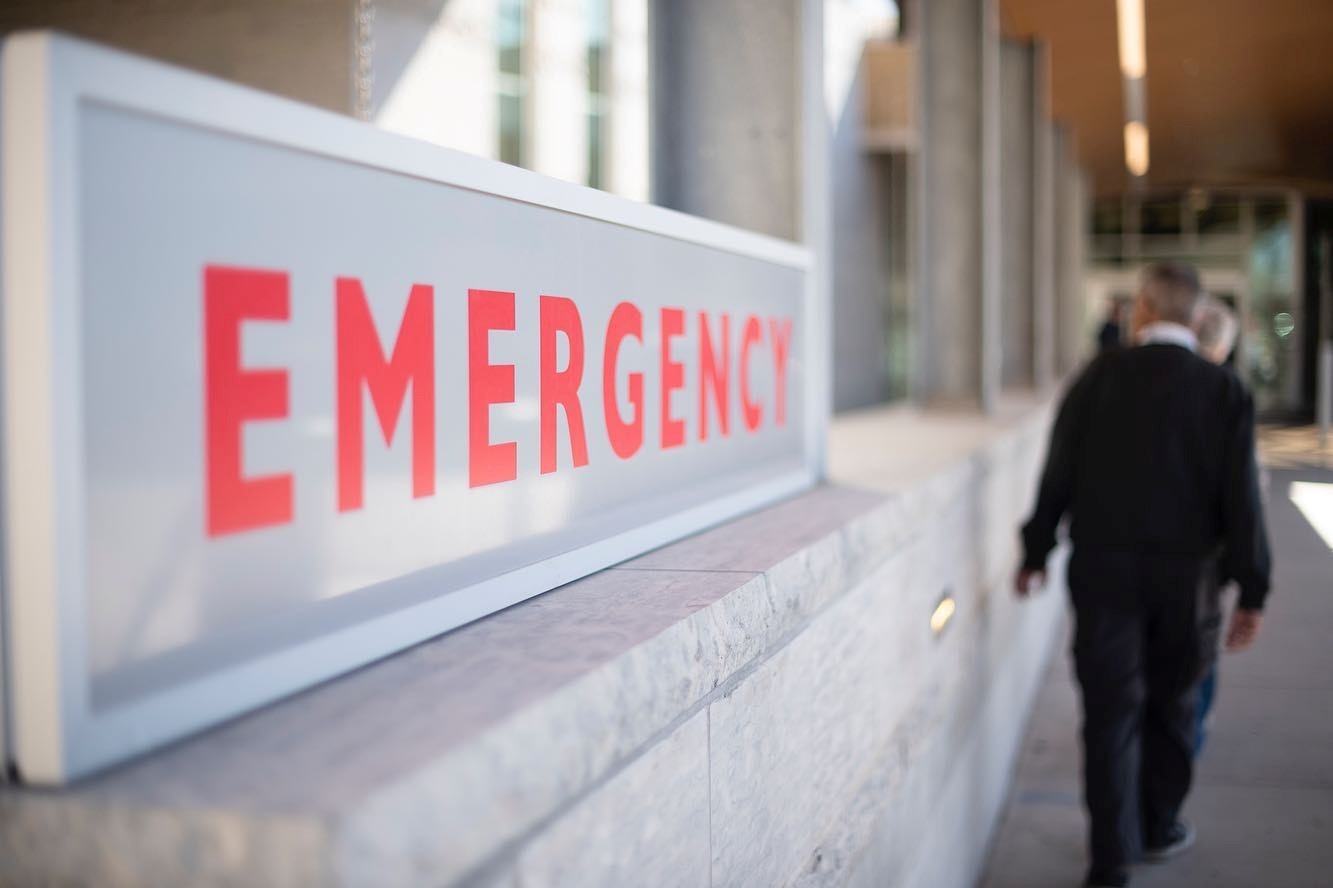
Update: Four new COVID-19 cases in Peel reported Friday as Ontario number almost doubles in two days
While the risk of COVID-19 infection for Peel residents is low, four new cases in Peel were reported Friday, after three new cases were reported Thursday that are connected to the region as more and more Ontario cases are starting to be diagnosed.
Two of the three cases linked to Peel reported by the Ontario Ministry of Health on Thursday are listed under Peel Public Health (PPH), and one is listed under Toronto Public Health, even though that case was reported out of Mississauga Hospital. The two cases reported by PPH Thursday do not yet have a hospital associated with them.
On Friday, 20 new cases were reported across the province including the four new cases in Peel, but few details about the individuals were listed by the ministry on its latest chart. The total number of cases in Ontario now stands at 79, marking a significant jump over the last two days, from 42 cases at the end of Wednesday. The data shows the number of cases in Ontario almost doubled in two days.
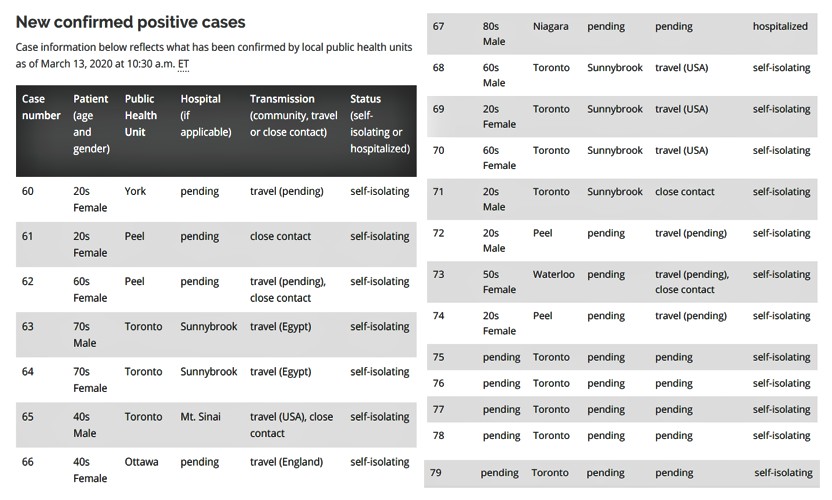
Cases 61, 62, 72 and 74 have been reported in Peel Friday by the Ontario Health Ministry
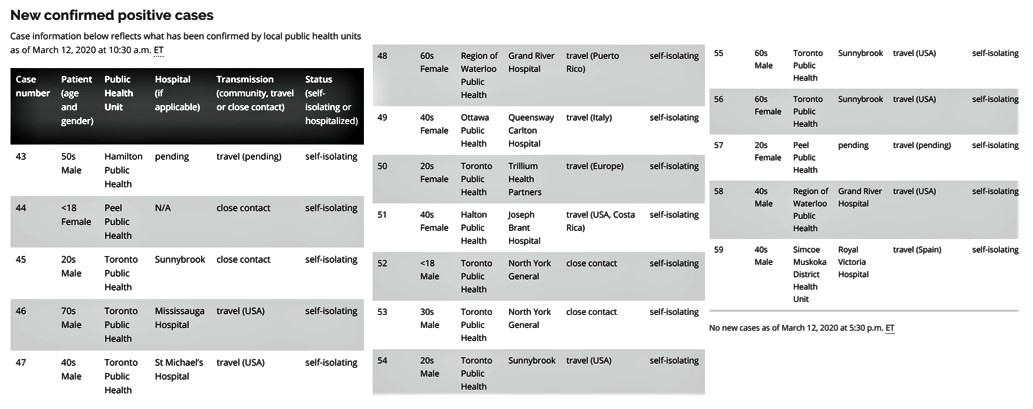
Cases 44, 46 and 57, all connected to Peel Region, were reported on Thursday by the Ontario Ministry of Health
A notable trend in the recent case data is the number of individuals who have contracted COVID-19 after travel to the U.S.. Eleven of the Ontario cases reported Thursday and Friday list recent travel to the U.S., unlike most of the early cases which did not involve travel to America.
There has been widespread criticism of the U.S. response to COVID-19, with President Donald Trump recently downplaying the risk and alarmingly poor testing capabilities being reported across the country.
With Peel’s close proximity and large amounts of local business with the U.S. including huge transportation operations located in the region which focus on shipping to and from America, it’s just another layer of possible exposure across the region.
The presence of Pearson International Airport in the region also poses unique concerns, with some 23,000 Brampton and Mississauga residents who work in or around the airport.
On Thursday, the provincial government announced all public schools in Ontario will be closed from Mar. 14 to Apr. 5, immediately after the March break, to prevent the spread of COVID-19. “We recognize the significant impact this decision will have on families, students, schools, as well as the broader community, but this precaution is necessary to keep people safe,” a joint provincial government press release states.
The Peel District School Board (PDSB) is working on a COVID-19 preparedness plan in the event of an outbreak in the region. Ahead of Thursday’s announcement of the extra two weeks of school closures, Carla Pereira, director of communications and community relations for PDSB, said the plan is in the works and will result in a detailed response. The hope is school closures will mitigate any spread that might have occurred with families returning from vacation.
The PDSB takes direction from PPH on "all community health matters,” said Pereira. While the school system dealt with the SARS outbreak in 2003 and the H1N1 pandemic in 2009, "those were different" situations, she said. What exactly PDSB’s plan entails remains to be seen.
Pereira referred The Pointer to guidelines from the ministry of health and long-term for the H1N1 pandemic, which the preparedness plan is based on. Given the document’s focus on mitigating risks to elementary and secondary schools, many of the infection prevention and control practices are applicable to the ongoing COVID-19 situation.
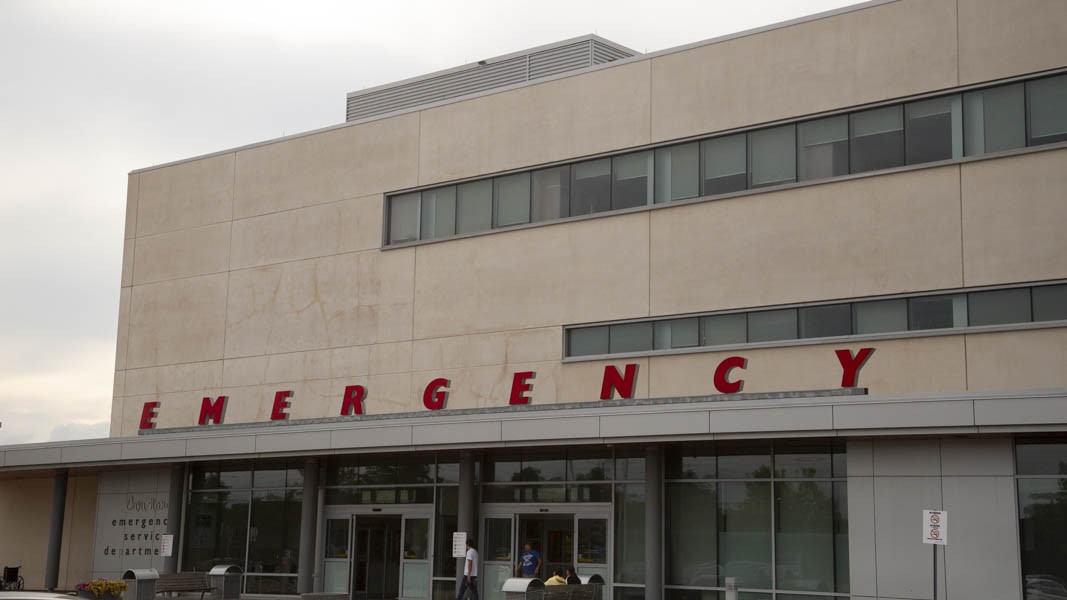
With March break coming up and an extended period of school closures, many families may choose to travel. This raises the question as to whether or not there is a risk of the disease spreading when schools are back in session, even with the extra two weeks off. Some families might choose to use the extended time off to travel, which could pose its own risks. Pereira said people should follow Canada’s travel notices, which ask people to be cautious when visiting countries such as France, Germany and China.
Since news of the coronavirus emerged, PPH has been planning ahead. “Honestly, the pandemic declaration is more of...a technicality than anything,” said Dr. Lawrence Loh, associate medical officer of health for the Region of Peel. Dr. Loh added the region has learned lessons from the 2003 SARS outbreak, which killed 44 Canadians and had catastrophic economic impacts on the GTA.
Earlier this week, Loh told The Pointer that William Osler Health System, Trillium Health Partners and other care facilities operating in the region take their lead from PPH, which has deployed between 70 and 80 staff (10 percent of its workforce) to deal with COVID-19 emergency situations. Staff include nurses, medical analysts, epidemiologists and other experienced healthcare professionals.
At this time, it is unknown if extra measures will be taken to assess those returning from March break and the additional two weeks off. This is a responsibility that lies partially with families who should monitor themselves for symptoms of the illness, Loh said.
Anna Madison, a spokesperson for the Public Health Agency of Canada (PHAC), told The Pointer that, while an outbreak is “not unexpected,” the healthcare system is ready to respond to one. “PHAC, along with provincial, territorial and community partners, continues to reassess the public health risk, based on the best available evidence as the situation evolves,” she added without any specific details.
Peel Region had four positive cases of the virus reported prior to Thursday. With seven more now linked to the region (including one tested at Mississauga Hospital but reported by Toronto's public health unit), the total could stand at ten or eleven. Current prevention efforts for the region don't expand beyond basic hygiene rituals, which include hand washing and covering a sneeze. “Stay home if you're sick. Let your employees work from home,” she said.
FROM THE WORLD HEALTH ORGANIZATION
The Signs, Symptoms, Disease Progression and Severity of COVID-19
Symptoms of COVID-19 are non-specific and the disease presentation can range from no symptoms (asymptomatic) to severe pneumonia and death. As of 20 February 2020 and based on 55,924 laboratory confirmed cases, typical signs and symptoms include: fever (87.9%), dry cough (67.7%), fatigue (38.1%), sputum production (33.4%), shortness of breath (18.6%), sore throat (13.9%), headache (13.6%), myalgia or arthralgia (14.8%), chills (11.4%), nausea or vomiting (5.0%), nasal congestion (4.8%), diarrhea (3.7%), and hemoptysis (0.9%), and conjunctival congestion (0.8%).
People with COVID-19 generally develop signs and symptoms, including mild respiratory symptoms and fever, on an average of 5-6 days after infection (mean incubation period 5-6 days, range 1-14 days). Most people infected with COVID-19 virus have mild disease and recover. Approximately 80% of laboratory confirmed patients have had mild to moderate disease, which includes non-pneumonia and pneumonia cases, 13.8% have severe disease (dyspnea, respiratory frequency ≥30/minute, blood oxygen saturation ≤93%, PaO2/FiO2 ratio <300, and/or lung infiltrates >50% of the lung field within 24-48 hours) and 6.1% are critical (respiratory failure, septic shock, and/or multiple organ dysfunction/failure).
Asymptomatic infection has been reported, but the majority of the relatively rare cases who are asymptomatic on the date of identification/report went on to develop disease. The proportion of truly asymptomatic infections is unclear but appears to be relatively rare and does not appear to be a major driver of transmission. Individuals at highest risk for severe disease and death include people aged over 60 years and those with underlying conditions such as hypertension, diabetes, cardiovascular disease, chronic respiratory disease and cancer. Disease in children appears to be relatively rare and mild with approximately 2.4% of the total reported cases reported amongst individuals aged under 19 years. A very small proportion of those aged under 19 years have developed severe (2.5%) or critical disease (0.2%).
According to Jack Jackson, president of Amalgamated Transit Union 1572, MiWay employees who came into contact with a Toronto man who contracted the virus are not allowed to follow such measures. The infected man works in Mississauga and used MiWay, TTC and GO Transit between Mar. 2-4, before being diagnosed with the virus.
While Loh can’t speak for MiWay, he recommends anyone who traveled or might have traveled with the individual to see a doctor. The Centers for Disease Control and Prevention (CDC) reports that it is unclear if people who have COVID-19 but don’t show any symptoms can spread the disease.
Operators and maintenance staff haven’t gone into self-isolation. Instead, they are still at work interacting with colleagues and the public, Jackson said. It’s not clear if employees are exhibiting any symptoms.
The City of Mississauga told The Pointer it is taking directions from PPH but won’t discuss why it did not stop employees who came into contact with the infected Toronto resident from returning to work. “The City [will] not discuss a labor relations issue with a collective bargaining unit in public,” a city spokesperson said via email.
One MiWay employee was also sent home earlier this week in the middle of his shift for wearing a mask. While the employee was supposed to come back to work on Wednesday, that never happened. “We called in the Ministry, which was no help as they would not force the employer to allow him to protect himself with a mask,” Jackson said.
According to Jackson, the employer’s refusal to not allow the action was based on public perception and how riders would react to operators wearing masks. “I would think ensuring that we do not pass any viruses onto the public should we be unknowingly affected would be a positive message,” he said.
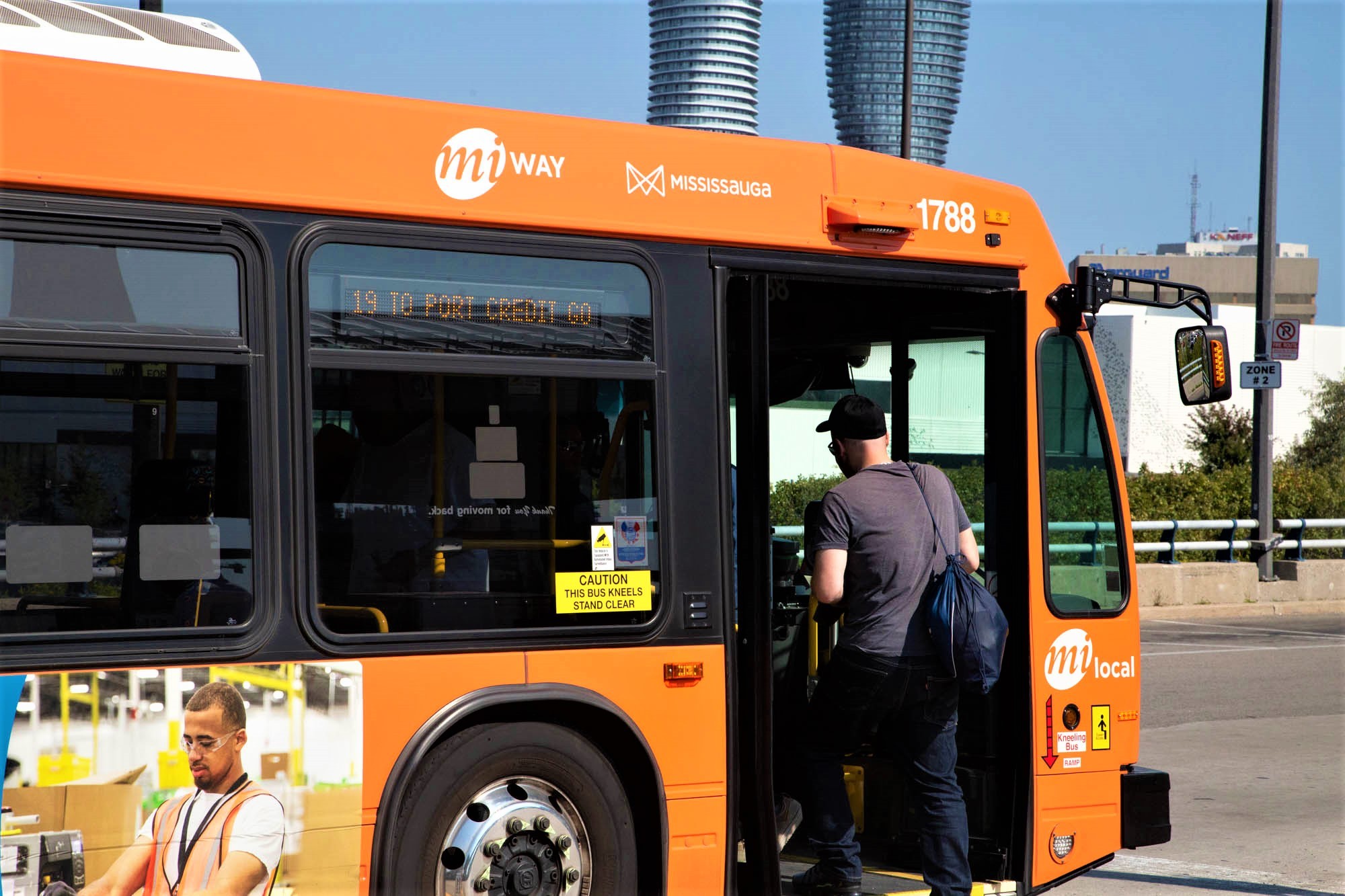
While MiWay has been taking part in extra cleaning measures, Jackson said this isn’t enough. “An enhanced cleaning protocol is the bare minimum a public transit system can do when faced with a pandemic.” He believes MiWay should follow the actions of GO Transit, which halted the three bus operators who came in contact with the infected man from returning to work.
Loh said the transit system is following a three step model to control the virus: containment, mitigation and recovery. Containment calls for the identification of the infected and those who have come in close contact with them. It’s not clear why this step wasn’t implemented with MiWay. Canada hasn’t reached the point of mitigation yet, Loh said. This scenario would see the virus spread widely in a community, like those in South Korea and Italy.
“Here in Canada, it's still very much containment because we're still finding all the cases that are showing up. They're all travel related...and we're very quickly able to isolate them and isolate their contacts as well,” Loh said.
The City of Mississauga said staff meet regularly to work on responses to the escalating issue. At this time, it's not clear if any events will be canceled.
The Pointer also reached out to the City of Brampton to learn about measures it is taking but did not receive a response ahead of publication.
Loh said questions about whether or not events should be cancelled is based on information from the PHAC. For example, if the event includes international attendees who come from areas with a high degree of COVID-19, the risk of the virus spreading is greater as is the need to cancel the event.
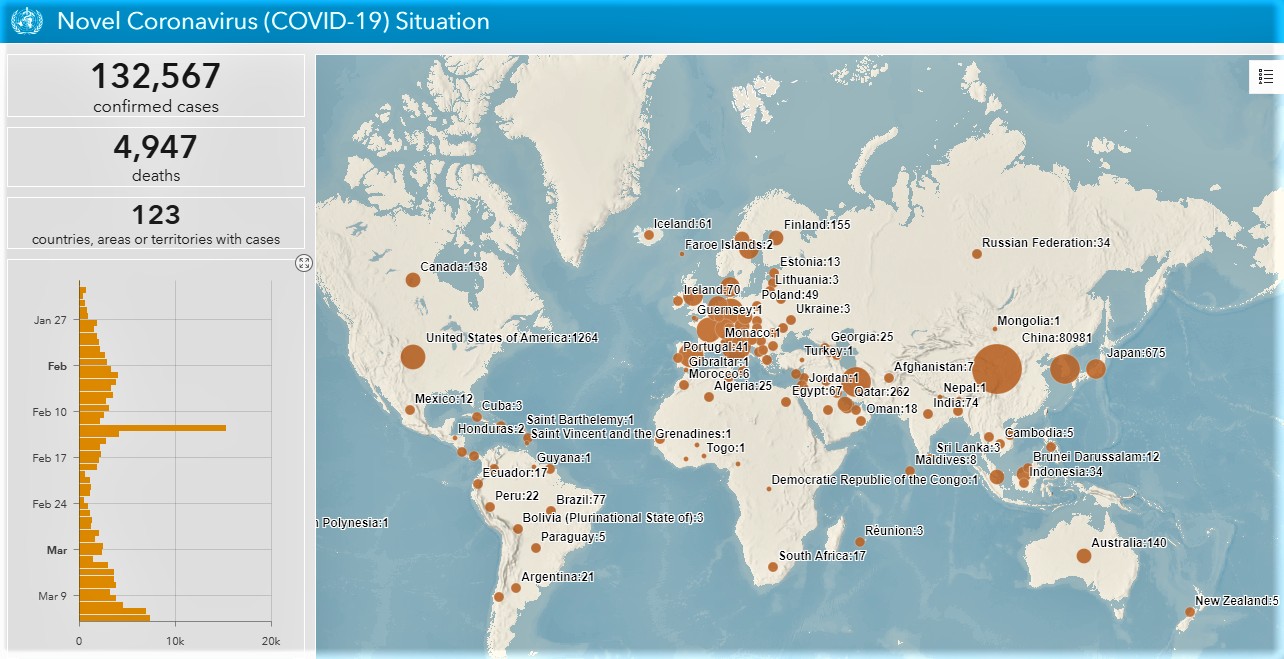
The World Health Organization's COVID-19 situation map as of Friday morning; Italy, not shown, has 15,113 cases and South Korea has 7,979 cases
Airports are another high risk area, due to the thousands of international travellers who pass through them on a daily basis. The GTAA told The Pointer it follows the guidelines set out by PHAC, ensuring bathrooms are cleaned regularly to allow people to wash their hands. Where areas with washrooms are harder to reach, the GTAA said hand sanitizer stations have been installed in the airport. As of Monday, The Pointer wasn't able to confirm these stations are up and running. This may be due to the limited number present, as, according to the GTAA, more of these stations have been ordered and are on the way.
It’s also unclear how first responders are being protected as the virus spreads. Dave Wakely, Peel Paramedics union president, told The Pointer paramedics have the option to wear PAPRs, a head-gear protection system that gives protection to the head, face, eyes, hearing and respiratory system. “The PAPRs worn by our paramedics who for religious or medical reasons cannot achieve a face mask seal with (standard) respirators these provide a higher level of protection than (standard) respirators,” he explained.
Monica Misra-Lui, communications specialist for Peel Regional Paramedic Services, told The Pointer a group has been assembled to develop a plan for any impacts caused by the virus. The group has put forward several recommendations, including a “call-in” process that would make it easier for shifts to be filled if an employee is absent.
The spread of COVID-19 is also a concern on post-secondary campuses. The University of Toronto Mississauga will shut down classes as of March 16, moving to online instruction only.
Laurentian University in Sudbury, the University of Toronto's other two campuses and the University of Western Ontario have shut down all classes, moving to online instruction. Sheridan College will close classes from March 16 to 20, with undisclosed alternate formats to begin March 23.
A number of airlines have extended suspensions for flights due to the virus. Air Canada has suspended flights to Hong Kong, Italy and Israel because of the outbreak. Air Transat has not cancelled its flights to Italy, which don’t start until April for the travel season.
Email: [email protected]
Twitter: @nida_zafar
Tel: 416-890-7643
Submit a correction about this story


